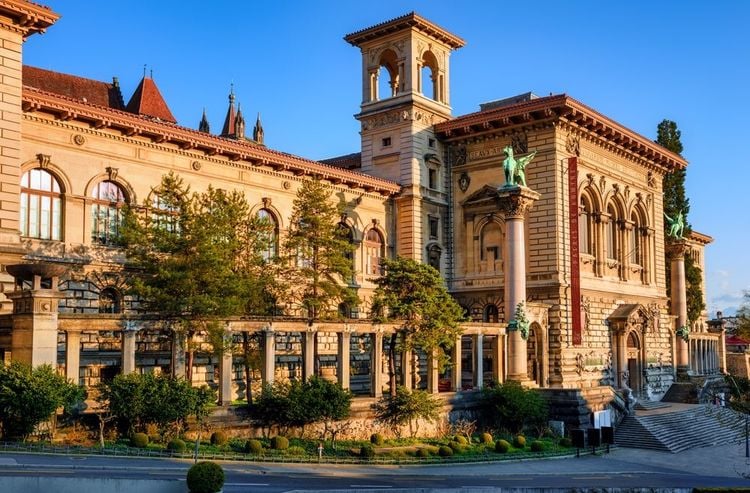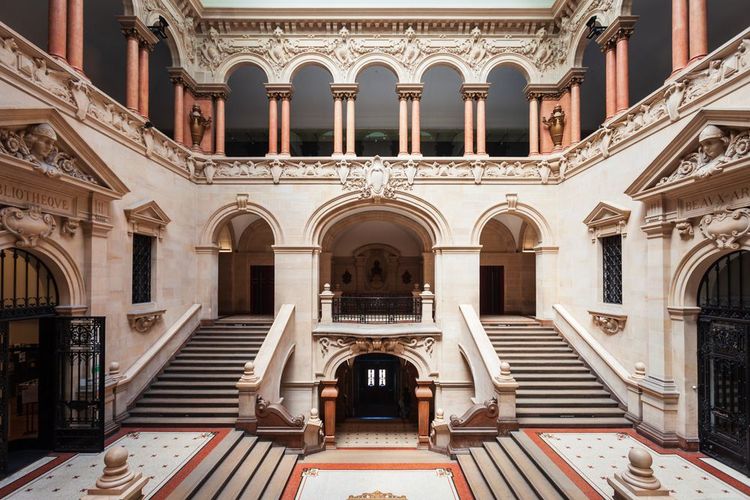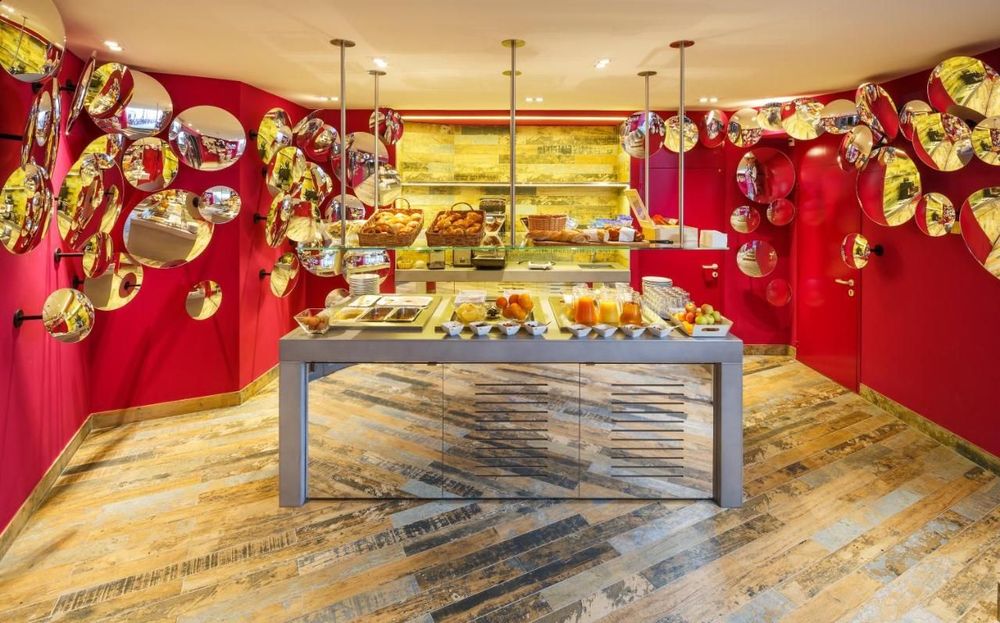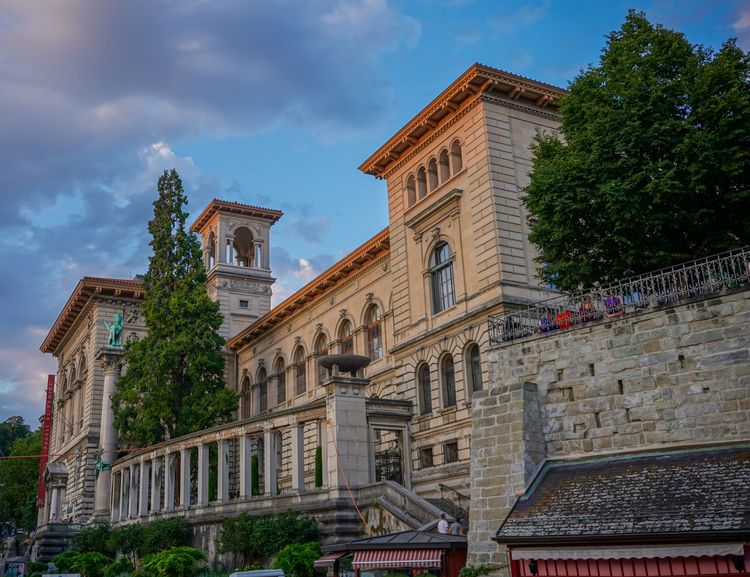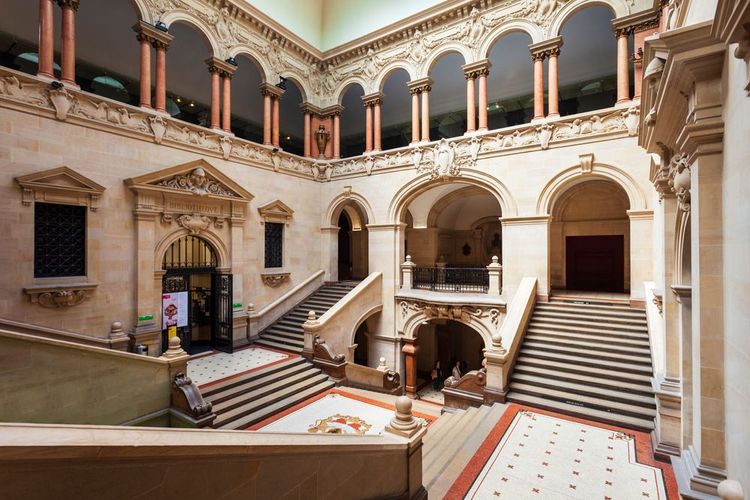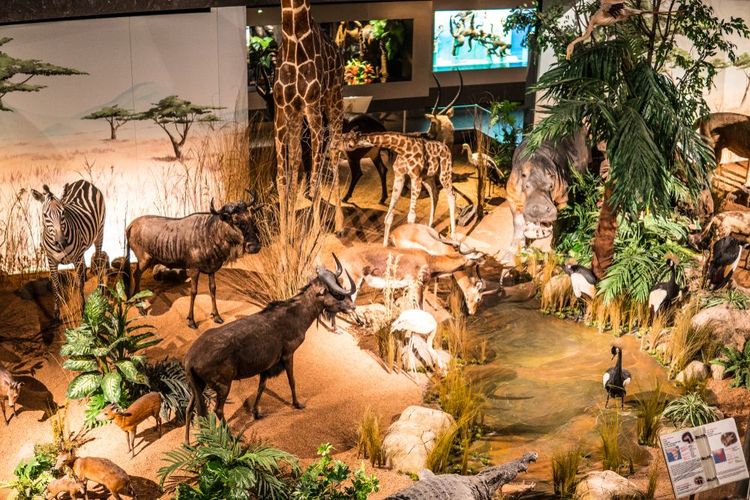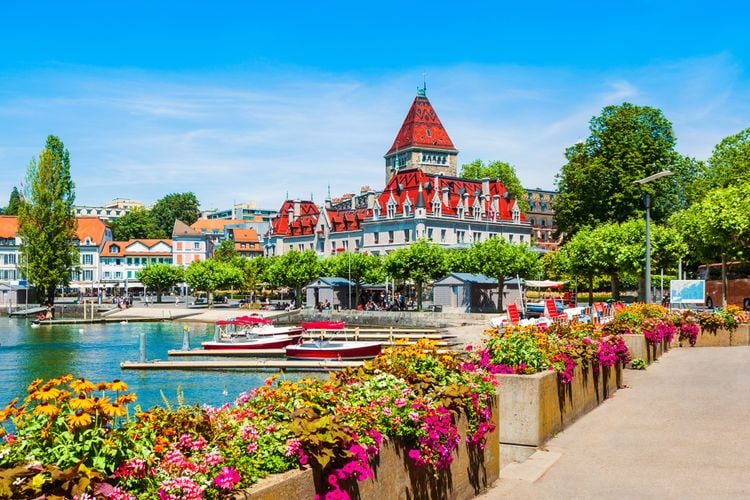A veritable melting pot, the architecture of the Palais de Rumine is fascinating. Built between 1891 and 1906 thanks to a bequest from a wealthy Russian heir, Gabriel de Rumine, the palace is a little jewel representing the high nobility.
Although it is essentially neo-Florentine in appearance, the palace made use of a number of techniques that were uncommon in its day, such as its concrete roof and slabs and its large glass windows. Its entrance with its maze-like staircase sets the tone. French architect Gaspard André drew inspiration for the atrium from the staircase designed by Michelangelo for the Laurentian Library in Florence.
